Film+
NEWHER A Record of Zhao Nan Workshop & Masterclass on Sound Design
Relationship is based on "existence", which cannot be eliminated. So long as it’s there, the relationship will occur with mutual influence.
What will you have to do in the face of creative exhaustion? You might as well return to your school days.
The greatest value sound brings to a film is "immersion and empathy". Whether it is the creation of film or the highlighting of character’s emotion, sound can convey a more real feeling to you.
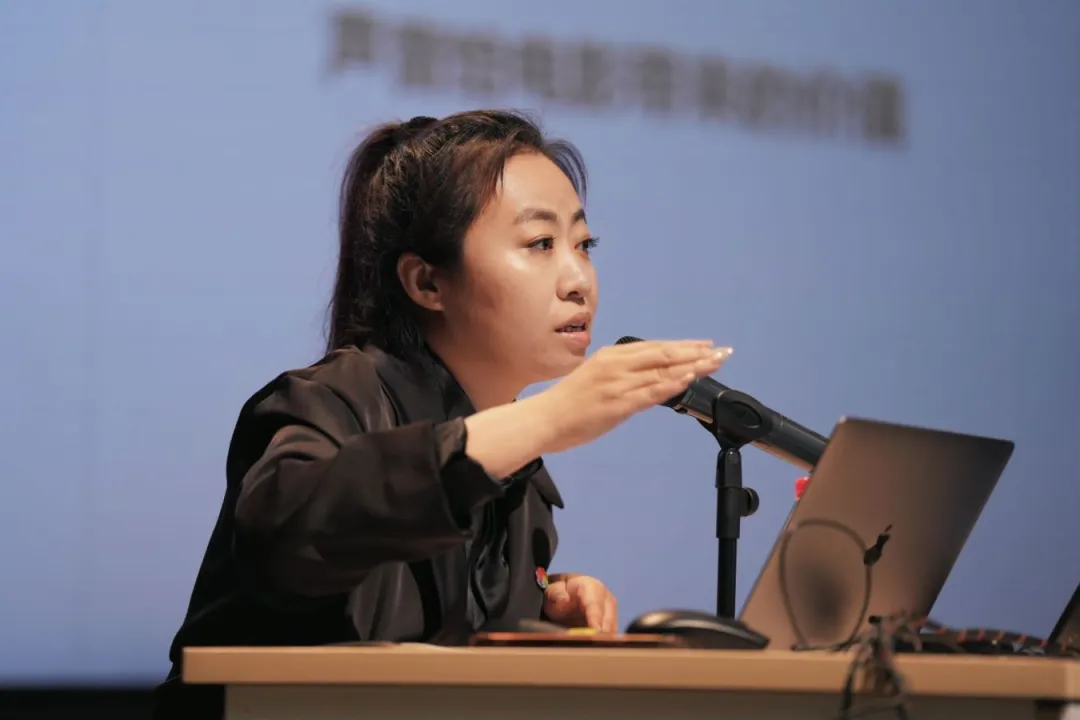
A photo of Zhao Nan Workshop & Masterclass on Sound Design
The keynote speaker for this Workshop & Masterclass is senior sound designer, Zhao Nan. She recalled her twenty years of career of gradually growing from a sound designer assistant to a sound director, and she also shared her valuable experience on how to overcome the bottlenecks of career.
▌From A Junior Sound Designer Assistant to A Sound Director
I think it is great to stick to the same profession for more than 20 years. After graduating from university, I tried many jobs in the field of film sound until I acted as the sound director of The Message for the first time. The overload of work and pressure made me exhausted both physically and mentally, and I rested for a whole year afterwards. Later, a teacher invited me to participate in the film Detective Dee and the Mystery of the Phantom Flame. Once I saw the frames, I felt it very complicated. I had no experience as reference before, so I wanted to give up. However, a friend said to me, "You have been in the field of sound design for ten years and you have even dealt with all kinds of works. Aren’t you willing to bring a satisfactory result for your career?” All these words greatly moved me. Out of my expectation, this film won the Best Sound Design at Hong Kong Film Awards that year. From then on, I made up my mind to go along this path.
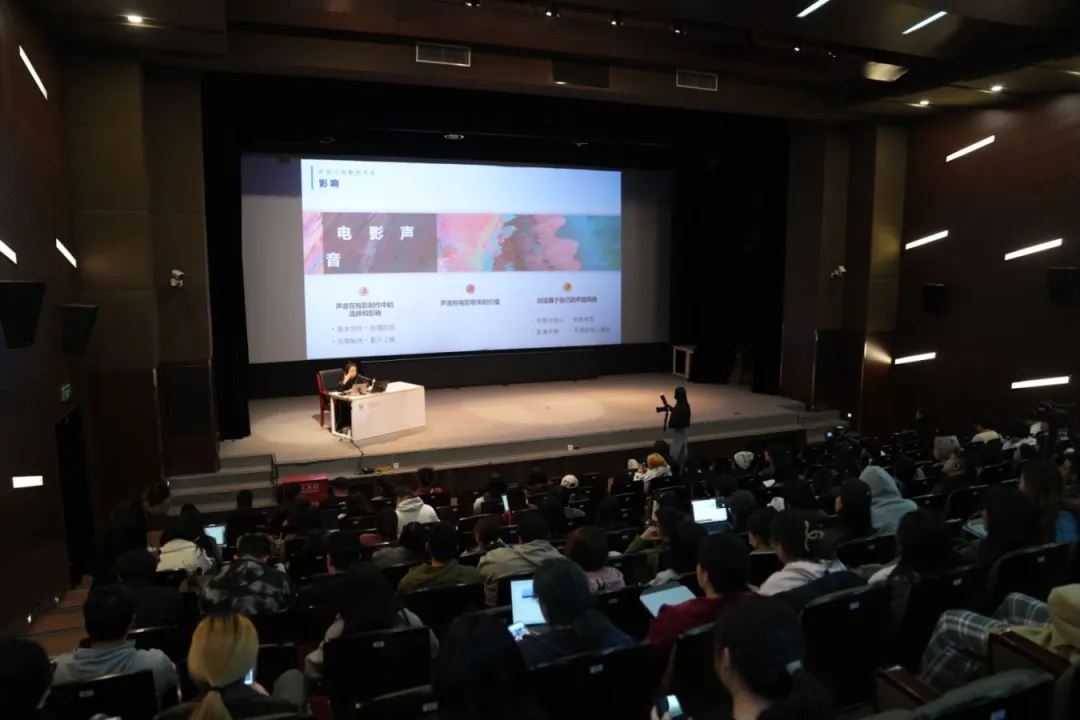
A photo of Zhao Nan Workshop & Masterclass on Sound Design
▌Career bottleneck: How to avoid duplicating myself?
I hope to be an excellent sound designer, so I have been constantly studying to master more advanced sound design methods and accumulate more working experience. It was until 2016 that I encountered another bottleneck in my career. I felt that the longer I dealt with films, the more experience instant I had. Therefore, I started to think: how to avoid duplicating myself and how to ensure the uniqueness of every film.
When I felt puzzled or confused, Mr. Cao Yu, a film school graduate, often offered me great assistance. He invited me to share my film experience with practitioners in different creative fields such as photography and fine arts. Therefore, I specially conducted reorganization and study for this purpose. I looked through films, referred to theories as I did in my school days. I tried to recall how my teachers taught sound design at school and how I learned the skills. It was that event that made me understand once you have created multiple films of the same type, you are very likely to fall into a kind of empirical baldness and exhaustion with the inertia in thinking. What should we do when this kind of creative exhaustion occurs? In fact, you might as well return to your school days.
▌A Wider Perspective: Back to the Film Itself
After that, I was lucky enough to be invited for the film Shadow directed by Zhang Yimou, which revealed a new stage for me. During my study in cooperating with several of his works, I found a wider perspective on sound design and started to pay more attention to the film itself.
Every time I was invited for a film, I always asked myself what the essence of this film was, how much value the sound could bring to it and what else I could do to make a film better apart from improving my own capabilities.
In addition to sound design, I also worked as a production supervisor sometimes, so that I could understand the creation and workflow of other departments, and master the most effective communication methods. During this process, I discovered that many creations and expressions could be presented more effectively through cooperation among different departments. Films are created in a collective manner, and the film language is rich. Making good use of the chemical reaction between hearing and vision will bring great promotion for the whole film industry.
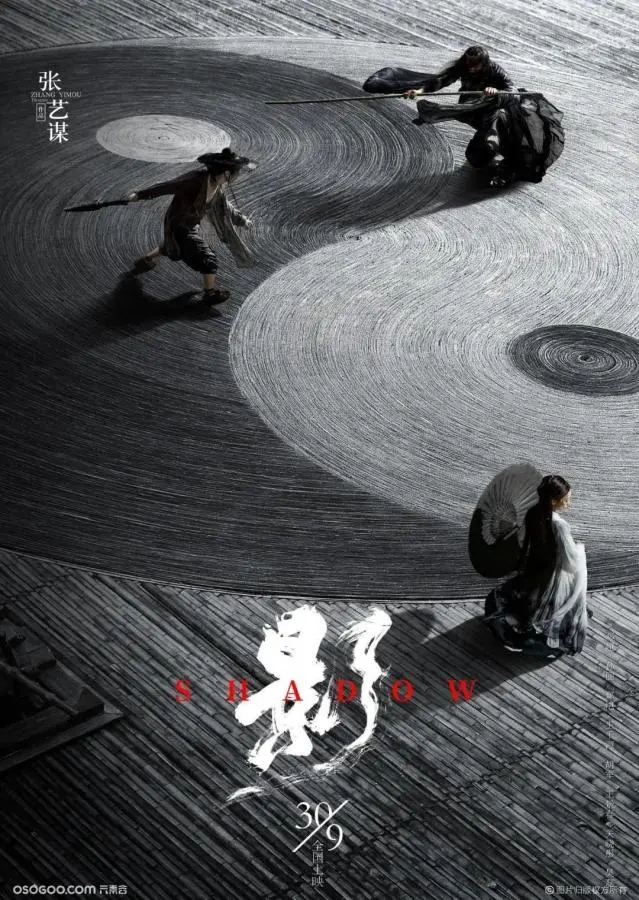
Poster of Shadow
Zhao Nan then explained the "selection and influence" of sound in film production based on her own works. She said that the sound design ran through a lot of stages such as script creation, shooting, post-production, and film release, and she made specific analysis for the aforesaid stages.
▌Script creation: Put sound design at the forefront
It is my habit to make sound notes after reading the script. For instance, what space can be reserved for sound in the narrative? What role does sound play in character modeling? Does this film have regional and humanistic characteristics? Is it possible to add some sounds to create an emotional connection?
I think we can put sound design at the forefront, and I hope everyone can think with sound during the script creation. For instance, the film Creation of the Gods I: Kingdom of Storms constructs a huge social system during the Yin and Shang Dynasties with the characters including the kings, princes, dukes, and hostages. I will consider how to use sound to distinguish their identities and classes, such as the material of armor and cold weapons, the sound effect of the accessories, and the rhythm and intensity of the character’s movements.
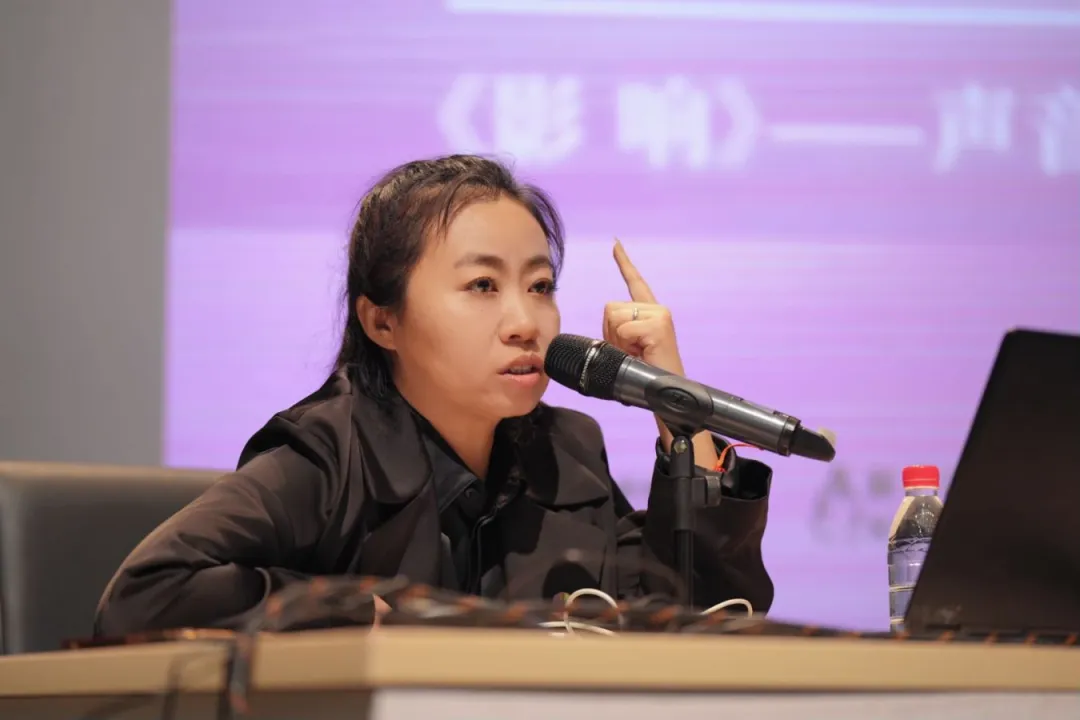
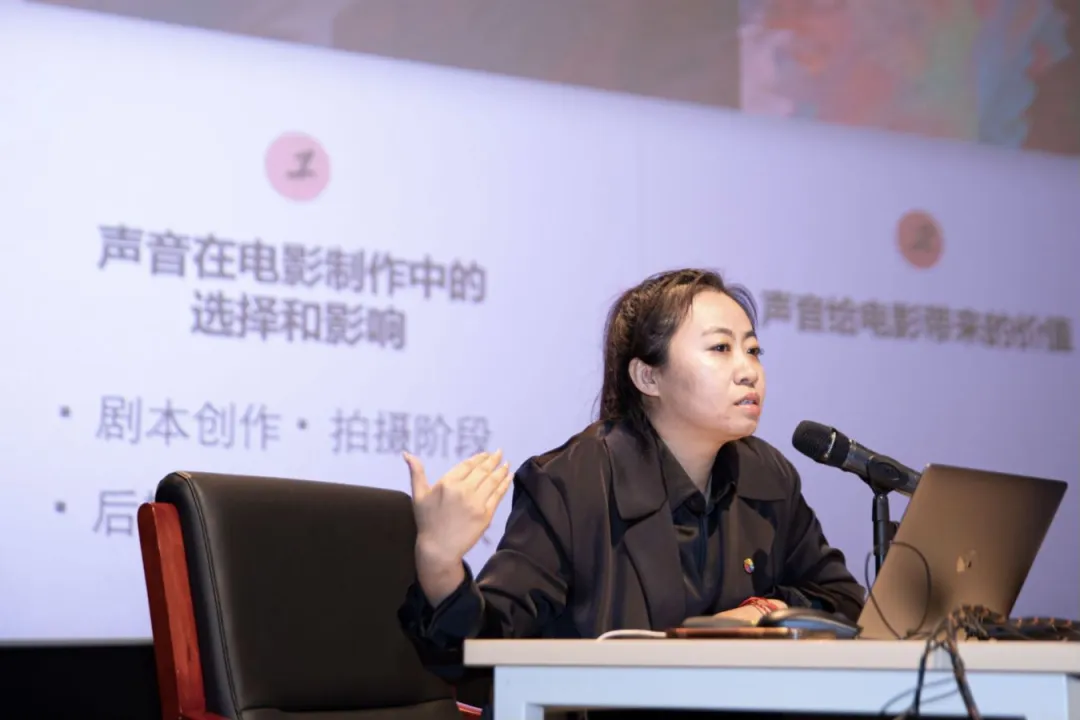
A photo of Zhao Nan Workshop & Masterclass on Sound Design
▌Shooting stage: actual sound or dubbing?
Actual sound and post-dubbing are two processes in film sound design. It does not mean that post-dubbing is needed because the technical specifications of actual sound cannot be guaranteed, nor does it mean that post-dubbing is never as good as live sound. It should be judged and decided by sound designers and directors based on many factors.
For example, I produced a film called Paths of the Soul, which tells the story of a Tibetan family worshiping the mountains. The filming lasted for 365 days with many amateur actors, including the passers-by they met during the journey who were also filmed. A film like this does not have any possibilities for post-dubbing. As for comedies, the performances are very random, and the actors' sense of presence and rhythm are hard to be replicated. There are also some films such as Snipers shot in extremely cold environment. The most realistic physiological and mental states presented on the site are also difficult to be simulated in a studio.
In addition, there is another situation where we need to consider whether actual sound is suitable for the style shaping of the film. For instance, the story of Karen Mok and Xu Zheng hypnotizing each other in the film The Great Hypnotist. There was no problem with the clarity of the actual sound, but the spatial texture of the scene couldn’t be eliminated technically, which greatly restricted my application of it. I hoped to adopt the dubbing since I wanted to create a unique scene in this film. A unique sound style that turned all language, motion effects, environment, and psychological auxiliary sound effects into one element, so that different elements could be interwoven in the sense of hearing, thus creating a psychedelic sense to echo the theme.
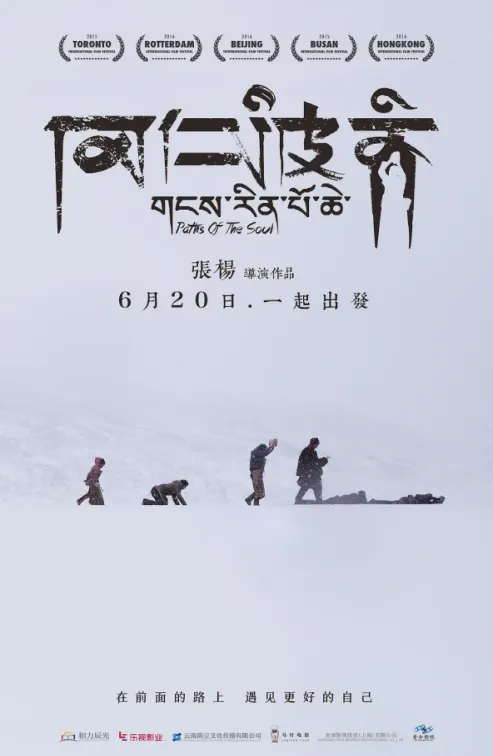
Poster of Paths of the Soul
▌Post-production: Film always has regrets
What matters most in post-production is time, whether it’s for sound edition, directing or all departments involved.
Film always has regrets, and most of which have to do with the time. One characteristic of today's films is that the release schedule is often determined before shooting starts, which means that the post-production can be predicted. My suggestion is that we must make the plan in a reasonable manner. Many tasks can be prepared in advance or even put forward after being refined. We should try to avoid wasting time on repeated labor, rework and blind experiments.
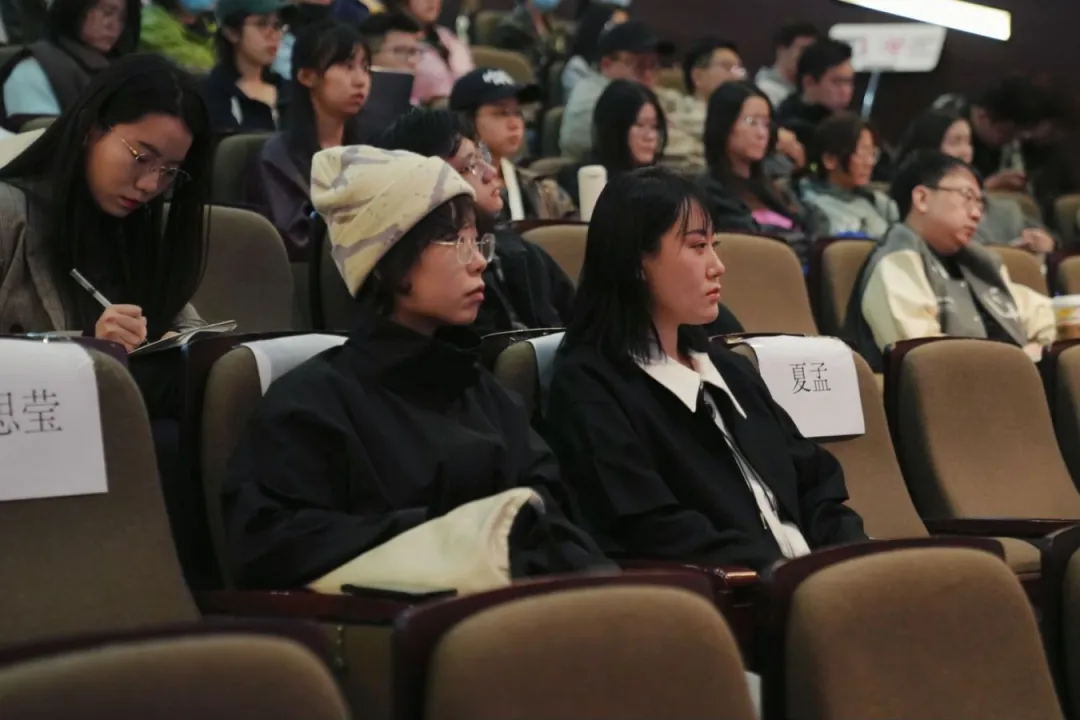
A photo of Zhao Nan Workshop & Masterclass on Sound Design
▌The value of sound: immersion and empathy
The greatest value sound presents to films is to convey more real feelings to the audience, whether it is creating the atmosphere of the film or highlighting the emotions of the characters. Compared with the pictures, the sound is more three-dimensional and immersive.
Take the attack at the beginning of Creation of the Gods I: Kingdom of Storms as an example. There are two very important sound elements in this scene, the throwing of catapults and the salvo of thousands of arrows from the top of the gate. What the director wants to express is that young soldiers only feel the true cruelty after arriving on the battlefield, which creates a strong sense of psychological oppression and fear in their minds. Therefore, it’s necessary for the sound to create a realistic and terrifying destructive effect. We simulated the auditory effect of piercing the sky and the eardrums, and pushed the sound of thousands of arrows to the extreme. During trial screening, audiences in the IMAX cinema strongly responded to the scene, and some even felt physical discomfort. The particularly personal feedback allows the audience to directly empathize with the pain of these children when they face the battlefield at that moment, and immerse themselves in the cruelty of war.
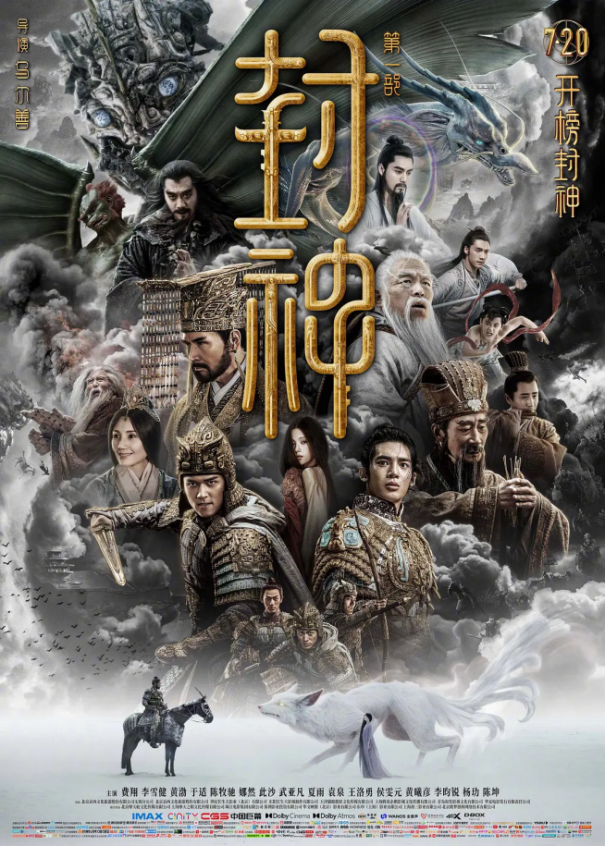
Poster of Creation of the Gods I: Kingdom of Storms
Finally, Zhao Nan summarized four steps to create the sound style of your own and encouraged everyone to establish a sound aesthetic.
▌Create the sound style of your own
How to find a temperament for a film and create the sound style of your own? Perhaps I may advise four points for you: Firstly, you should understand whether the core of the film is an event or a character. If it is an event, is the narrative rhythm fast or slow? Secondly, you should clarify the type of film. Thirdly, it is the image style, cyberpunk or black and white? Sunny or gloomy? Fourthly, as for the director’s core expression, I think the expression must have feedbacks and you need to anticipate how the audience feel when they leave.
For example, Full River Red can be completely transformed into a realist style -- language, footsteps, and fighting sounds can be created into a real lane space mixed with night insects, birdsong, and wind blows, to present a natural and realistic temperament; however, Full River Red is also featured as a suspense film. To achieve this, I blocked out all natural sounds and only retained the wind. But it is a specially processed sound effect instead of the sound of real wind. I placed them in unexpected positions according to different tones to form the current suspenseful temperament in coordination with the music, so that the style of the entire film became completely different.
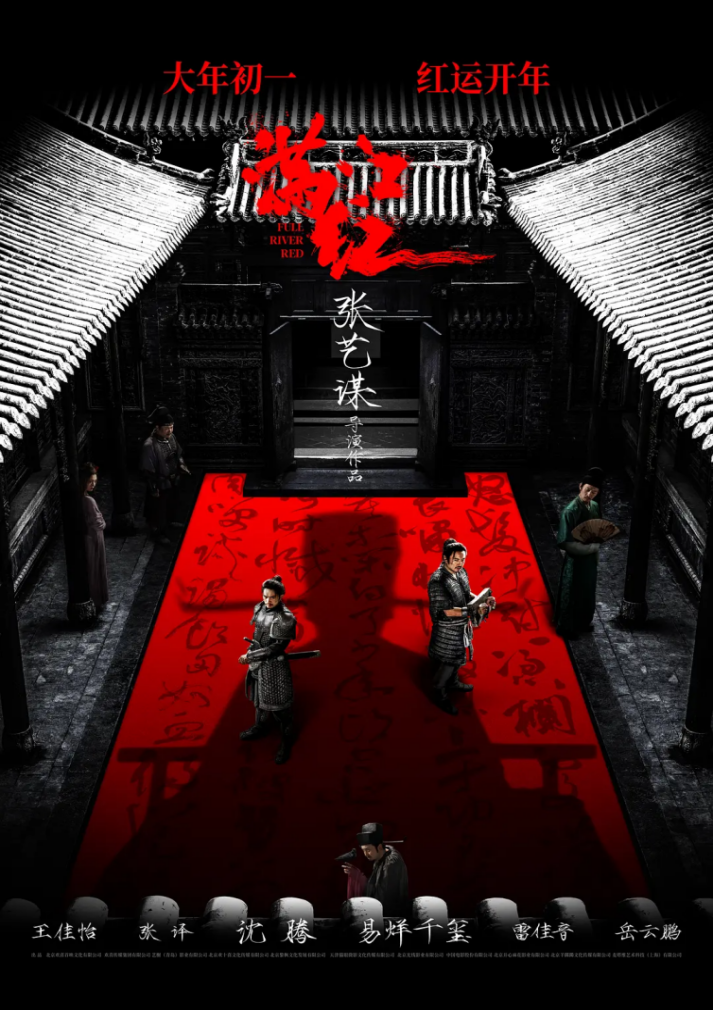
Poster of Full River Red
▌The aesthetics of sound
The aesthetics of sound are relatively consistent with culture. For example, Full River Red is a story about the Southern Song Dynasty, which is mainly featured with cultural simplicity, so we decided on a minimalist sound positioning.
The film Shadow is full of the image style of ink painting and the black and white tone. What does ink painting feel like? Simple lines without too many modifications, and it presents a kind of fluidity. So how can we use sound to display such a kind of feature? For example: we can adopt the method of dots, lines, and surfaces to outline the composition of the sound in a clearer manner, and always maintain the interaction between sparseness and density, stillness and movement, realism, and freehand brushwork in terms of the sense of hearing.
I like the snow scene at the beginning of Creation of the Gods I: Kingdom of Storms very much. The first written record of snow in oracle bone inscriptions appeared in the late Shang Dynasty, so we hoped to design the snow at the beginning as the first snow in China to convey a sense of primitiveness and roughness. Meanwhile, when we created the mythical beasts such as Taotie (ancient Chinese mythological creature), Lei Zhenzi (a character in the classic Chinese novel) and the Dragon Bearded Tiger, I specifically consulted Classic of Mountains and Seas and Investiture of the Gods. The books described Lei Zhenzi as a man "having a pair of wind and thunder wings under his ribs", and Taotie as a beast “whose sound is just like the crying of a baby". We hoped to create an oriental mythical beast and establish our own oriental aesthetics with these cultural characteristics as much as possible.
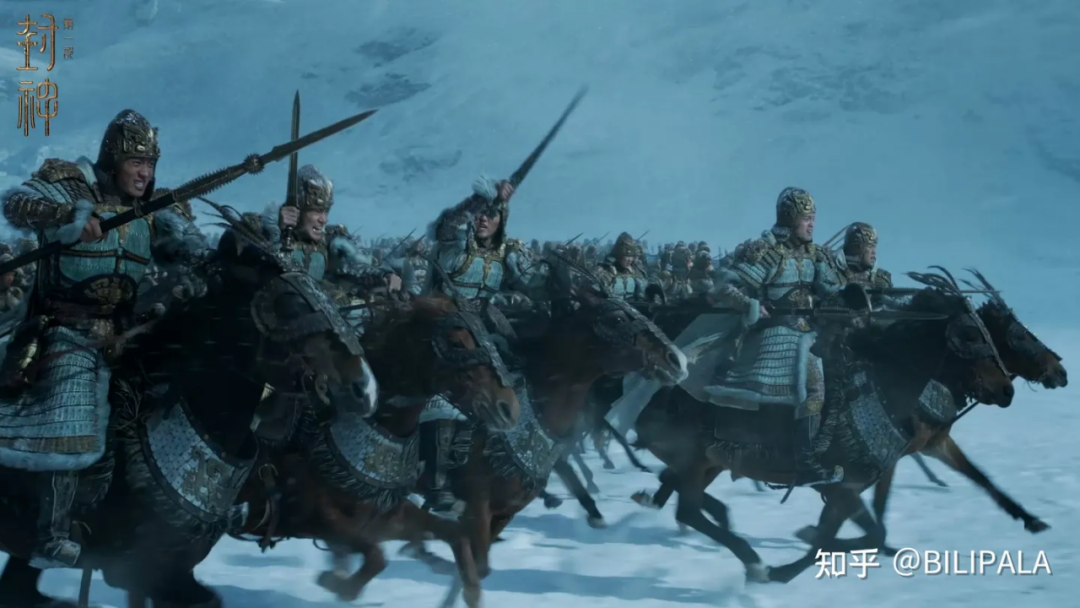
Poster of Creation of the Gods I: Kingdom of Storms
▌Q & A:
Young director Xia Meng: Hello, Ms. Zhao Nan, I’d like to ask you a question about my film this time. In this situation where there are no lines at all and we just want to emphasize the subjective and objective voices, how can we make the audience understand and make the difference between them? Because my film is about a deaf and I especially hope that the audience can share his subjective feelings and compare his subjective feelings with the hearing experience of the healthy people.
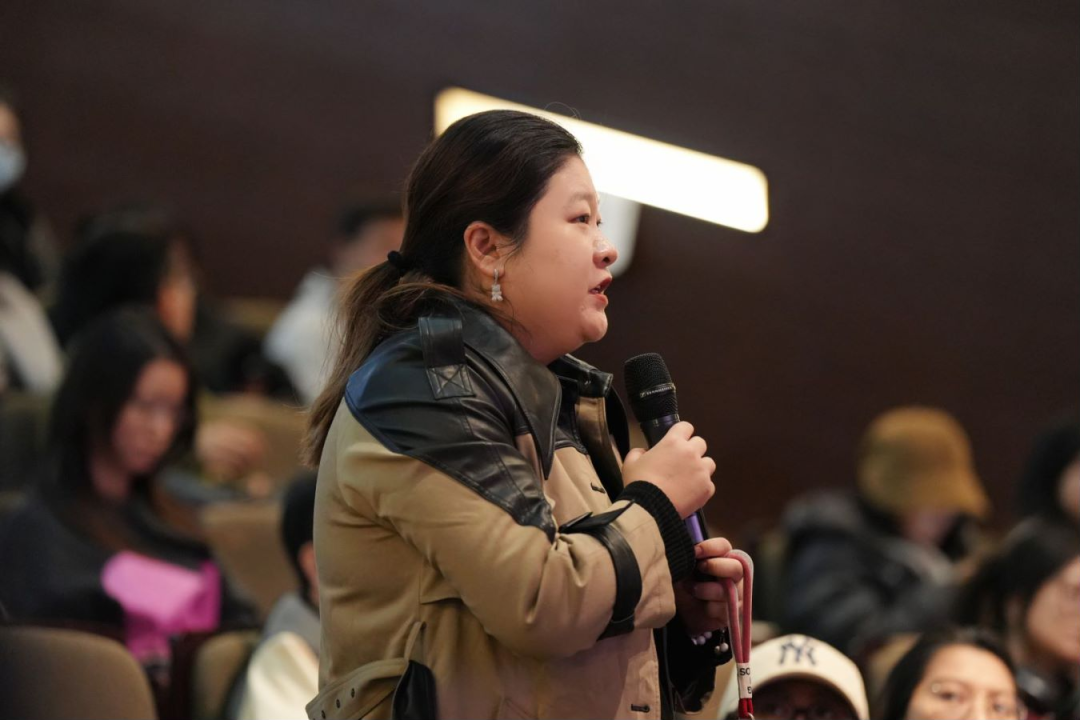
Young director Xia Meng asked questions on the site
Zhao Nan: What you are talking about is a group of people with hearing impairment, which is a subjective experience compared to the normal hearing. You need to make his sound different from the normal ones with a contrast in both frequency and space. However, it’s necessary to distinguish the concepts and paragraphs from the subjective perspective and hearing-impaired people with clear presentation.
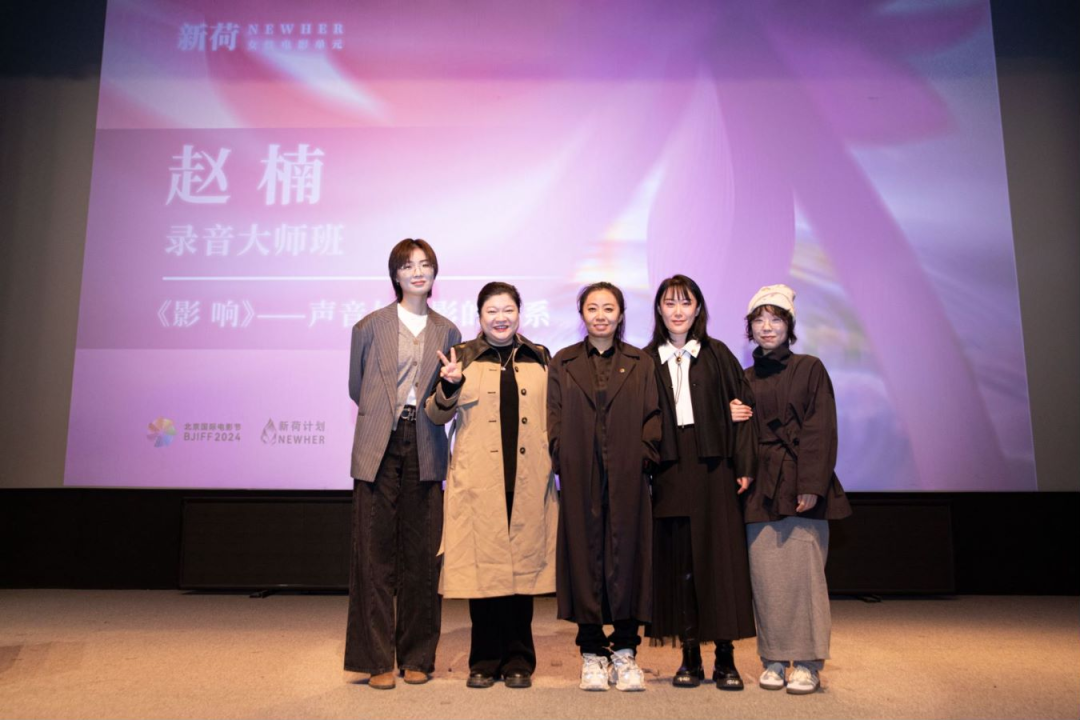
Zhao Nan takes photo with young directors
Audience: Will you tell the director what kind of sound effect you want to create, and what kind of sound effect do you want to be presented in the camera?
Zhao Nan: I, perhaps, will not ask the director to shoot anything for the sake of sound effect, because the film needs a unified image style. But the director needs to tell me what should be expressed for each scene. After reading the script, I will also discuss with the director and give some suggestions with pictures, such as: "If your picture looks like this, I will deal with it in this way. If your picture looks like that, I will switch into another plan".
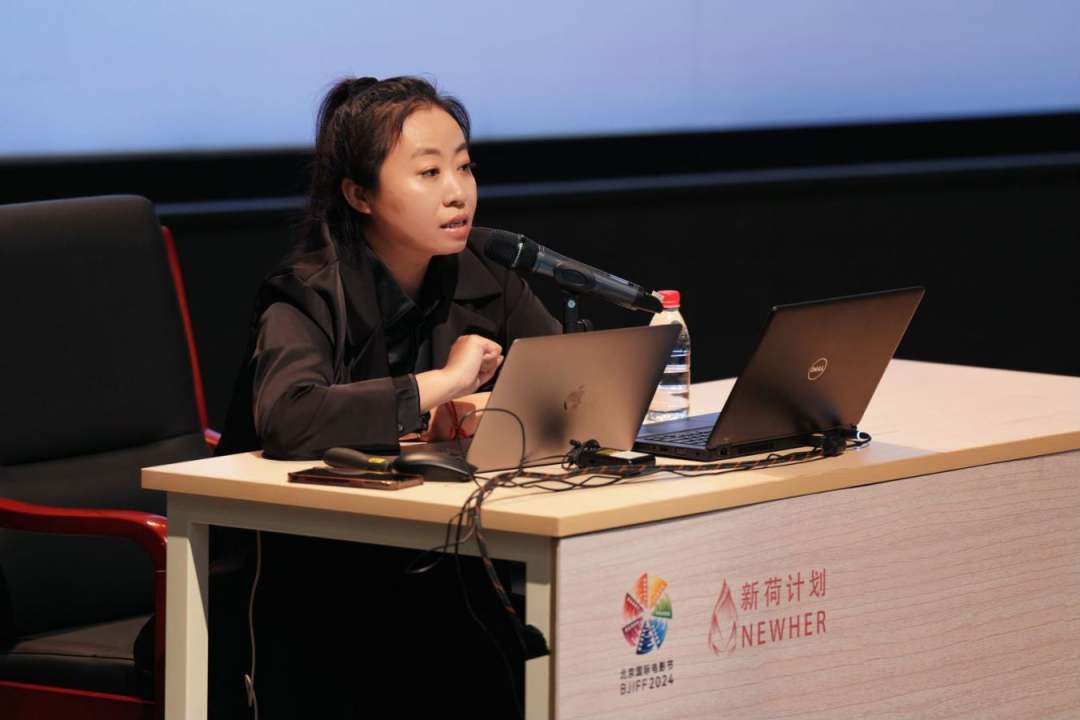
Zhao Nan answers questions by the audience
Audience: Hello, Ms. Zhao, as you have just mentioned, how can we deal with sound effect that may not exist in real life in the context of realism, so that they can still convey a realistic natural environment in the film?
Zhao Nan: To present realistic stories with a different feeling, you can make use of addition and subtraction to change the real sound components and proportions. For example, if you want to convey the feeling of anxiety in the venue, we can choose a sound relevant to the buildings and people here to represent the irritability; however, if you want to add the sound of "waterfall" in the venue which has nothing to do with the site, or if you want a certain sound element which can run through the whole film, I think it necessary to make some preparations with reasons, such as setting up a scene to introduce this element first, and then blend it into the subjective or objective scene through sound mixing to match the characters and emotions.
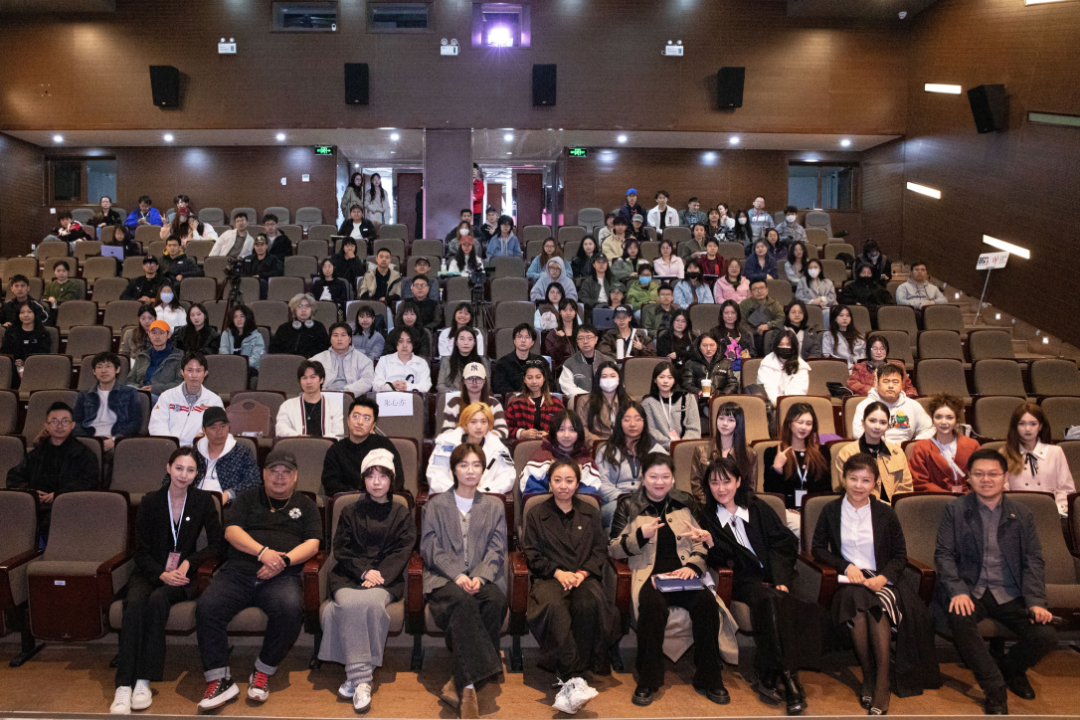
Group photo of Zhao Nan Workshop & Masterclass on Sound Design
Please download the Beijing International Film Festival APP for more interesting content

